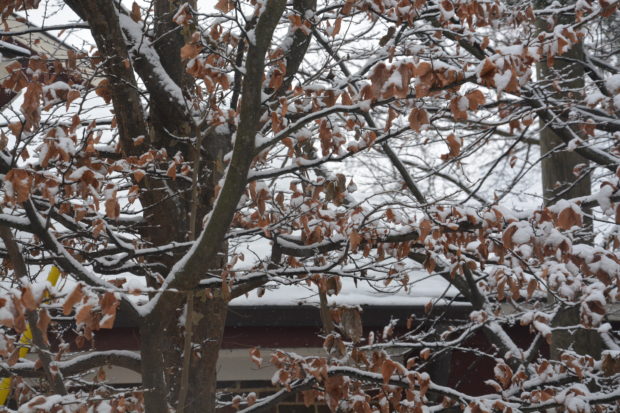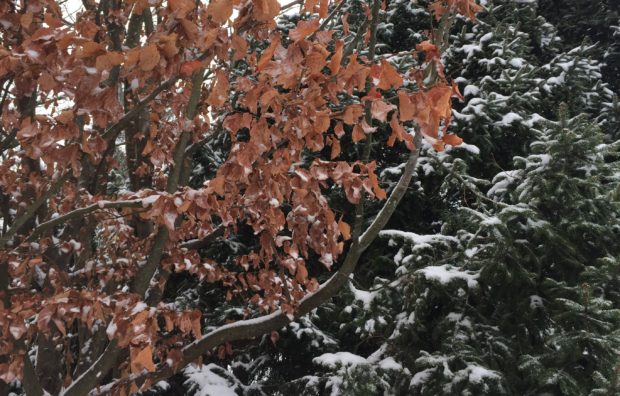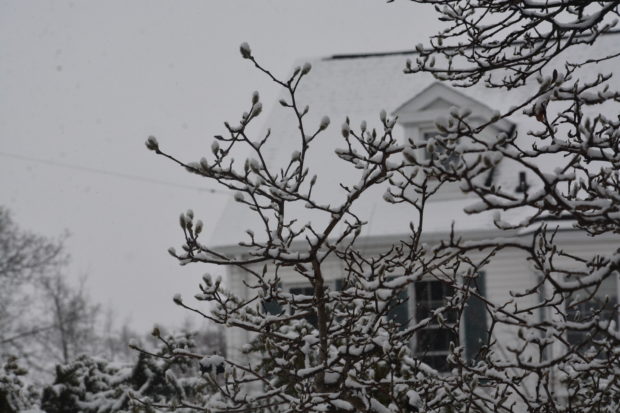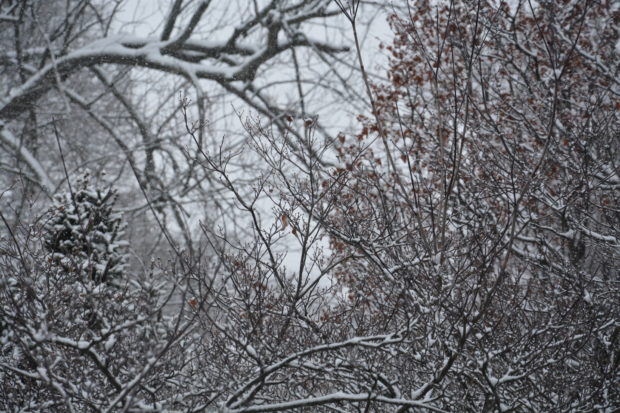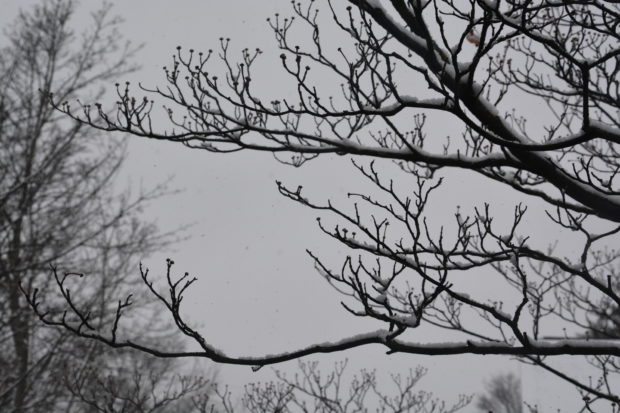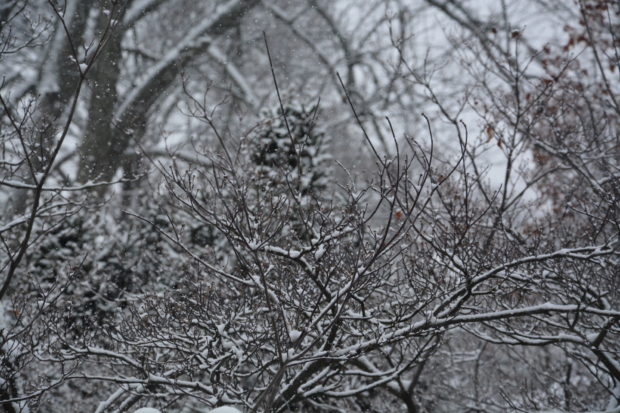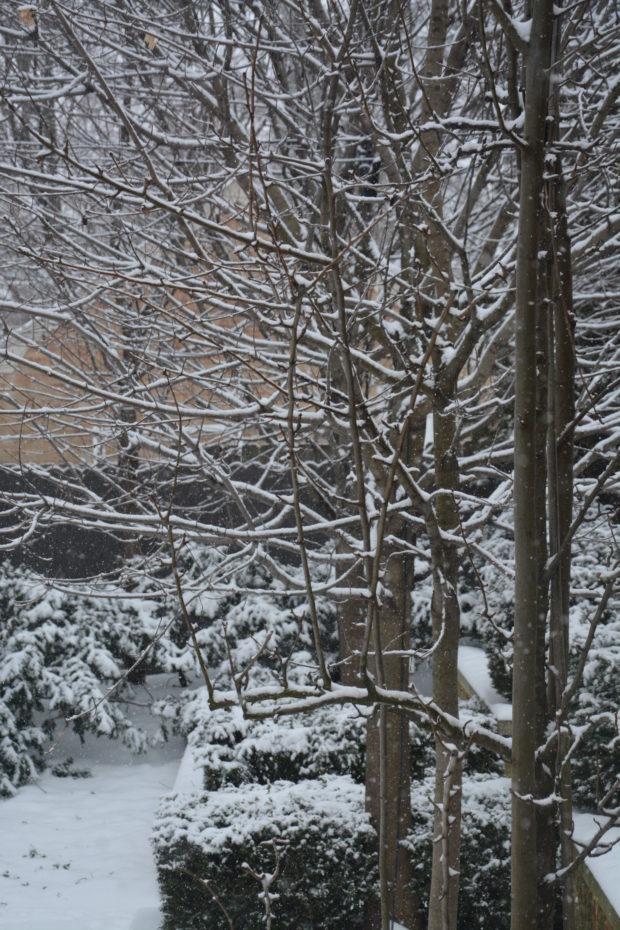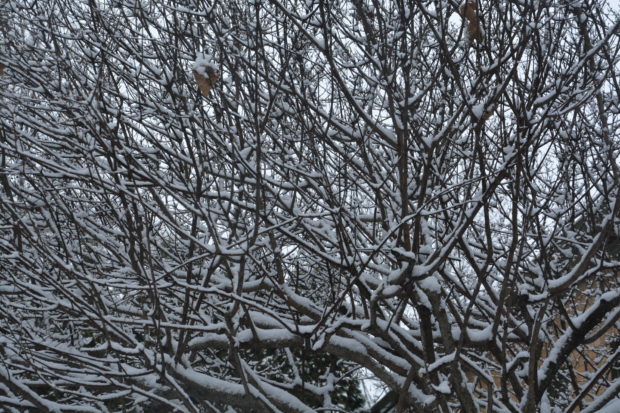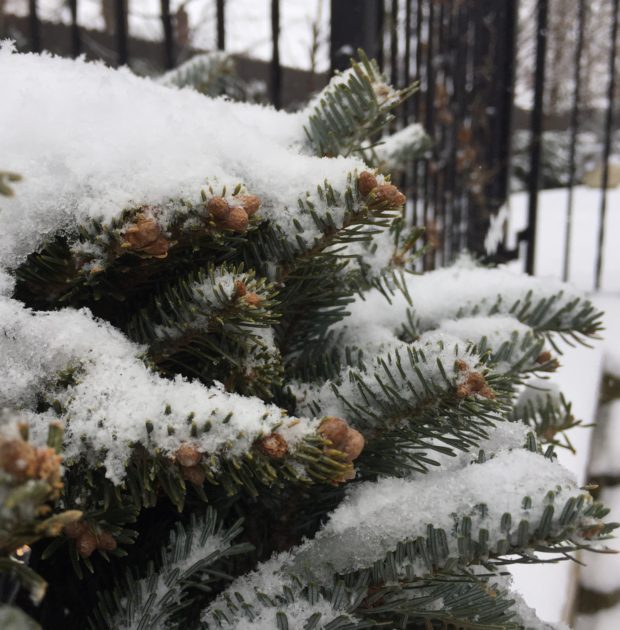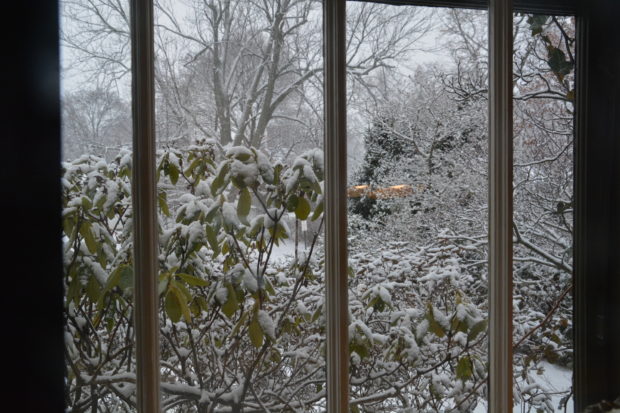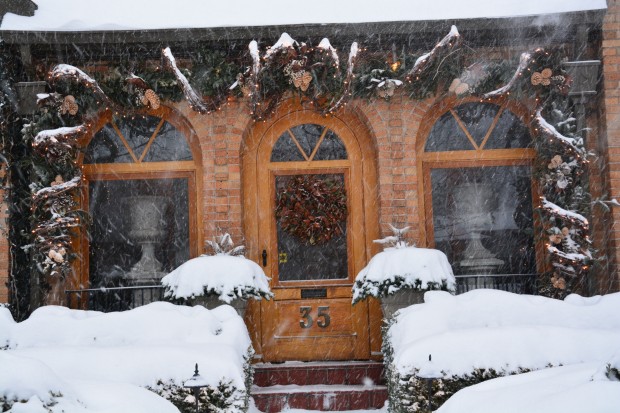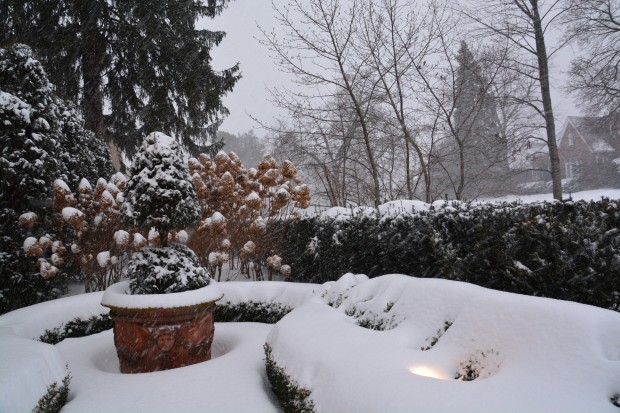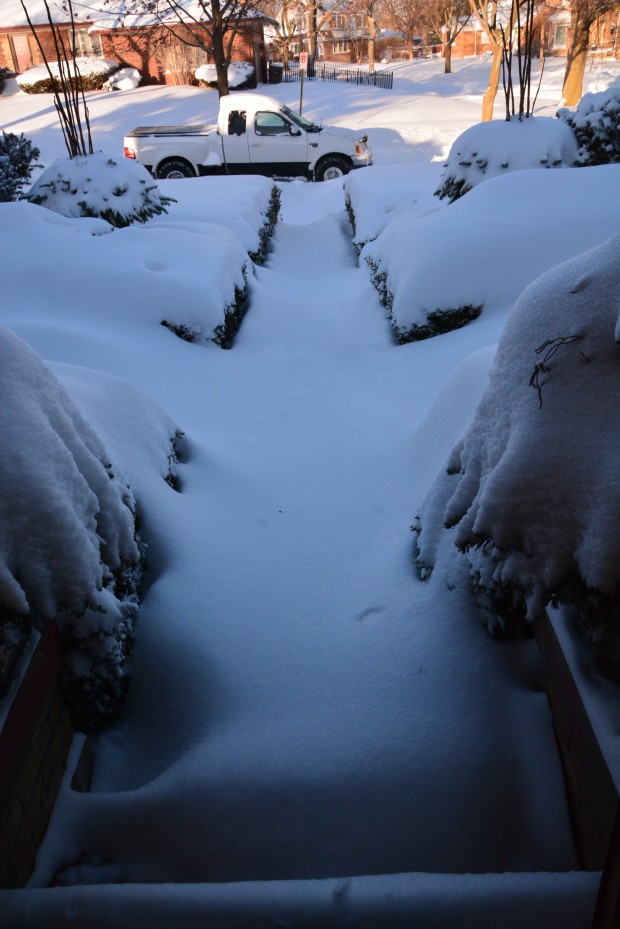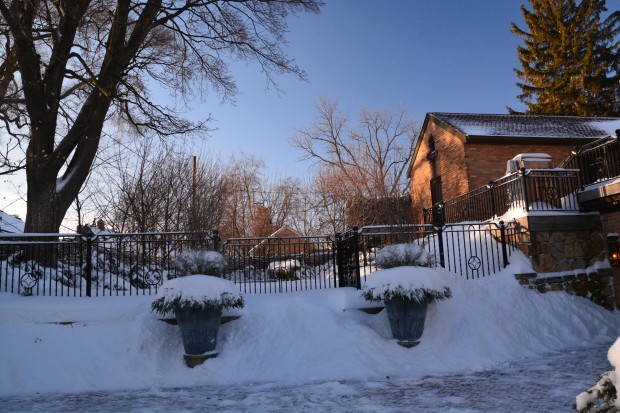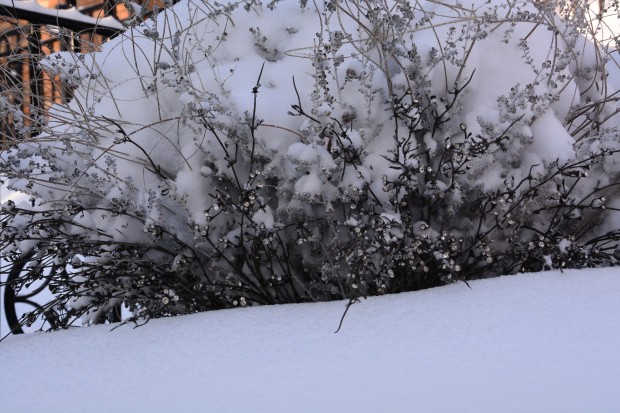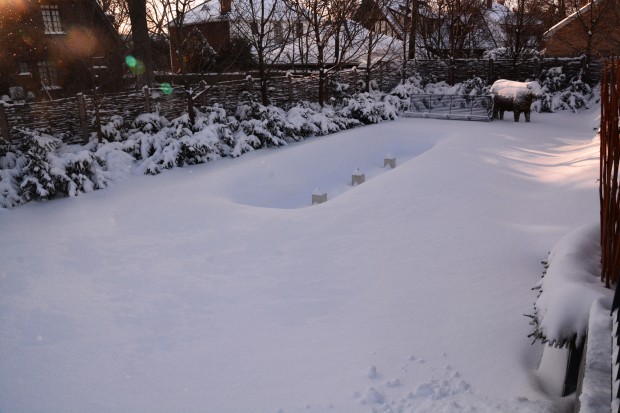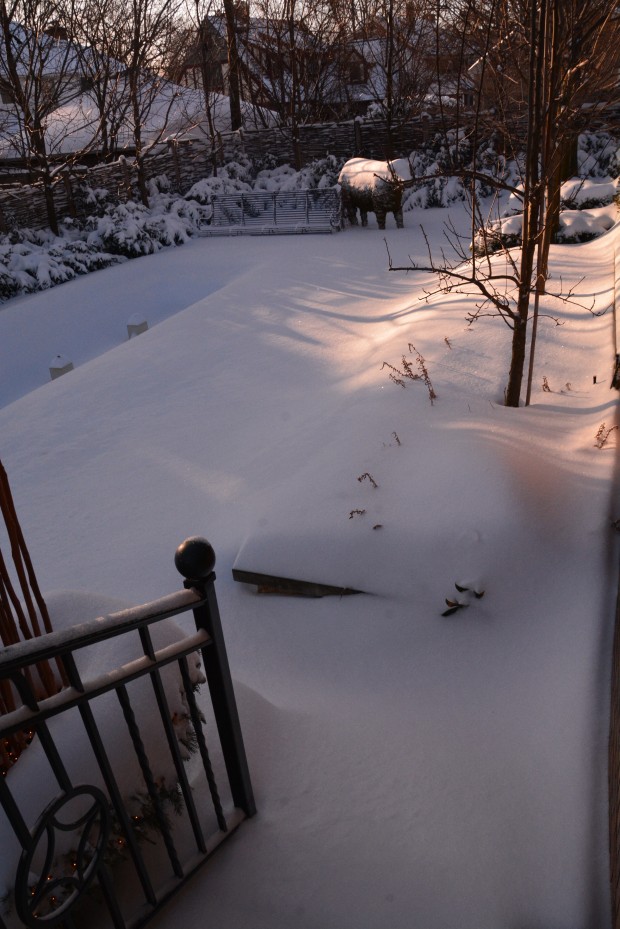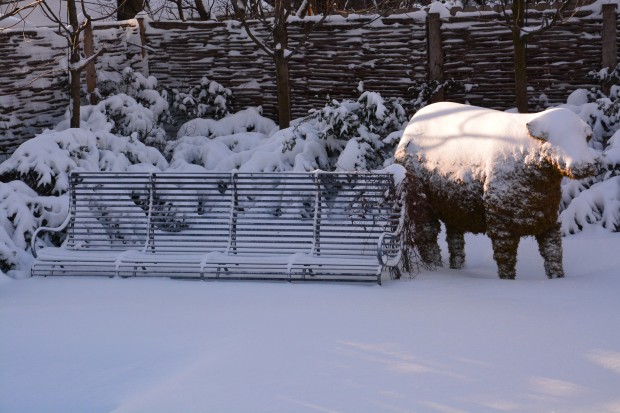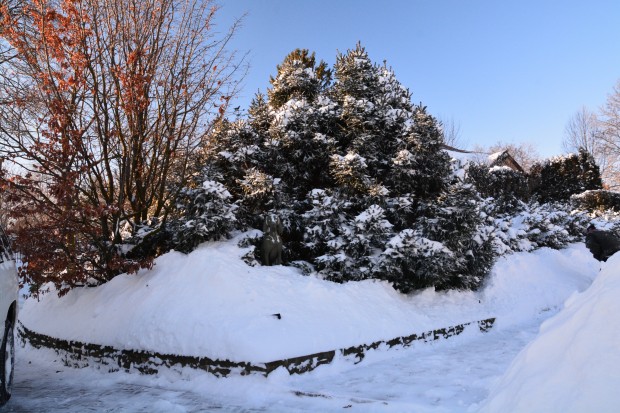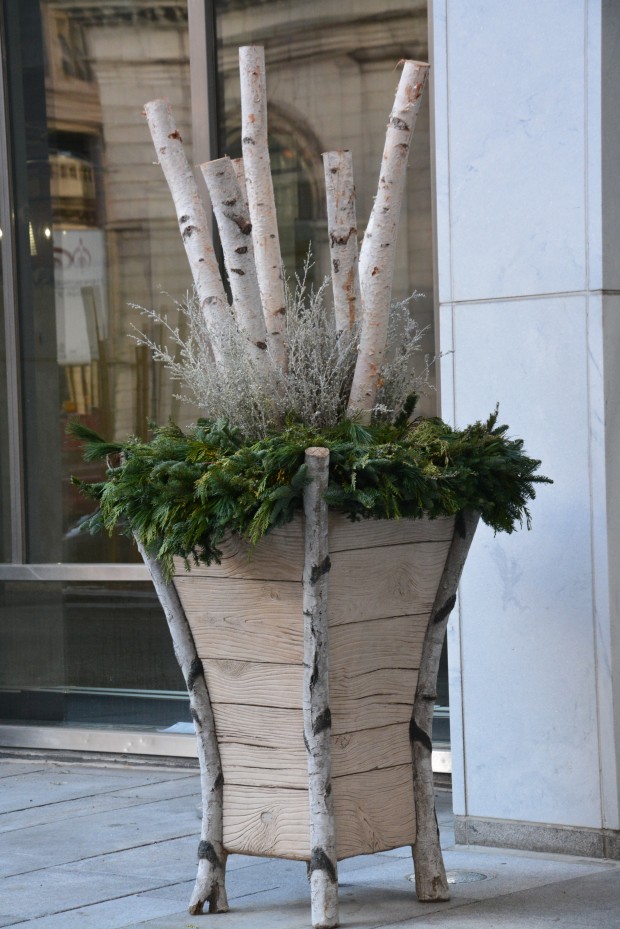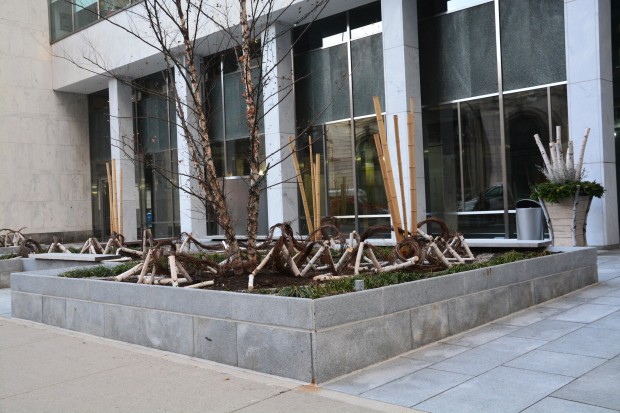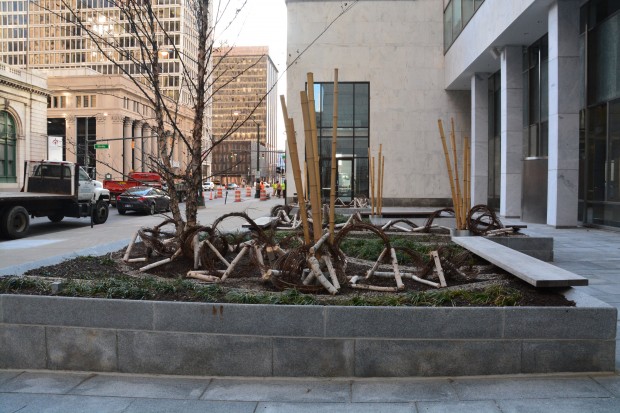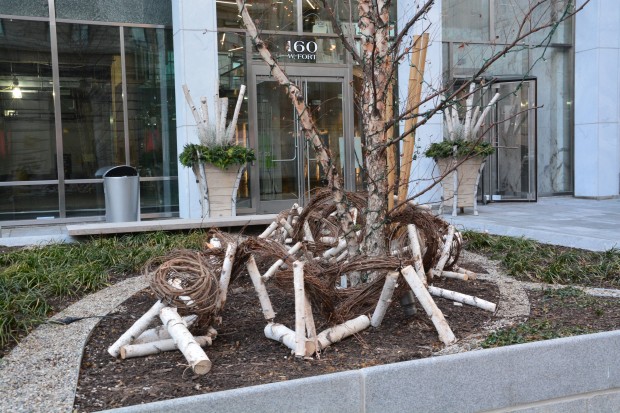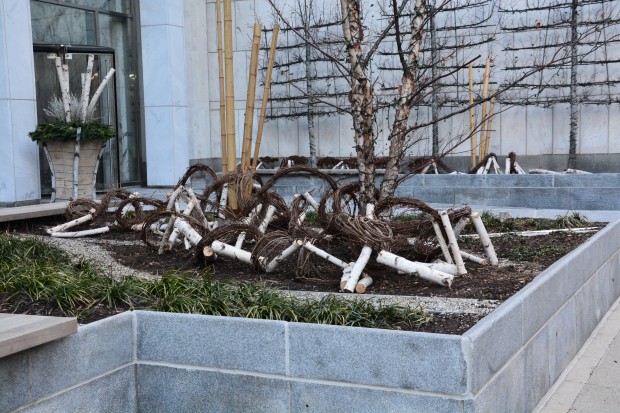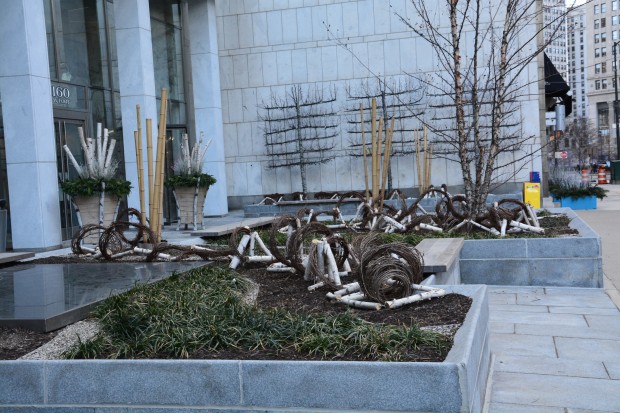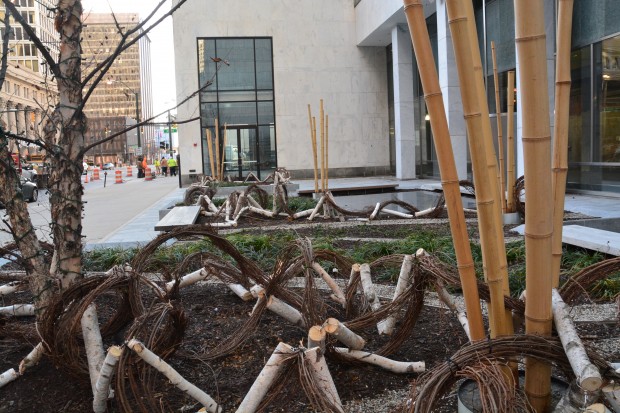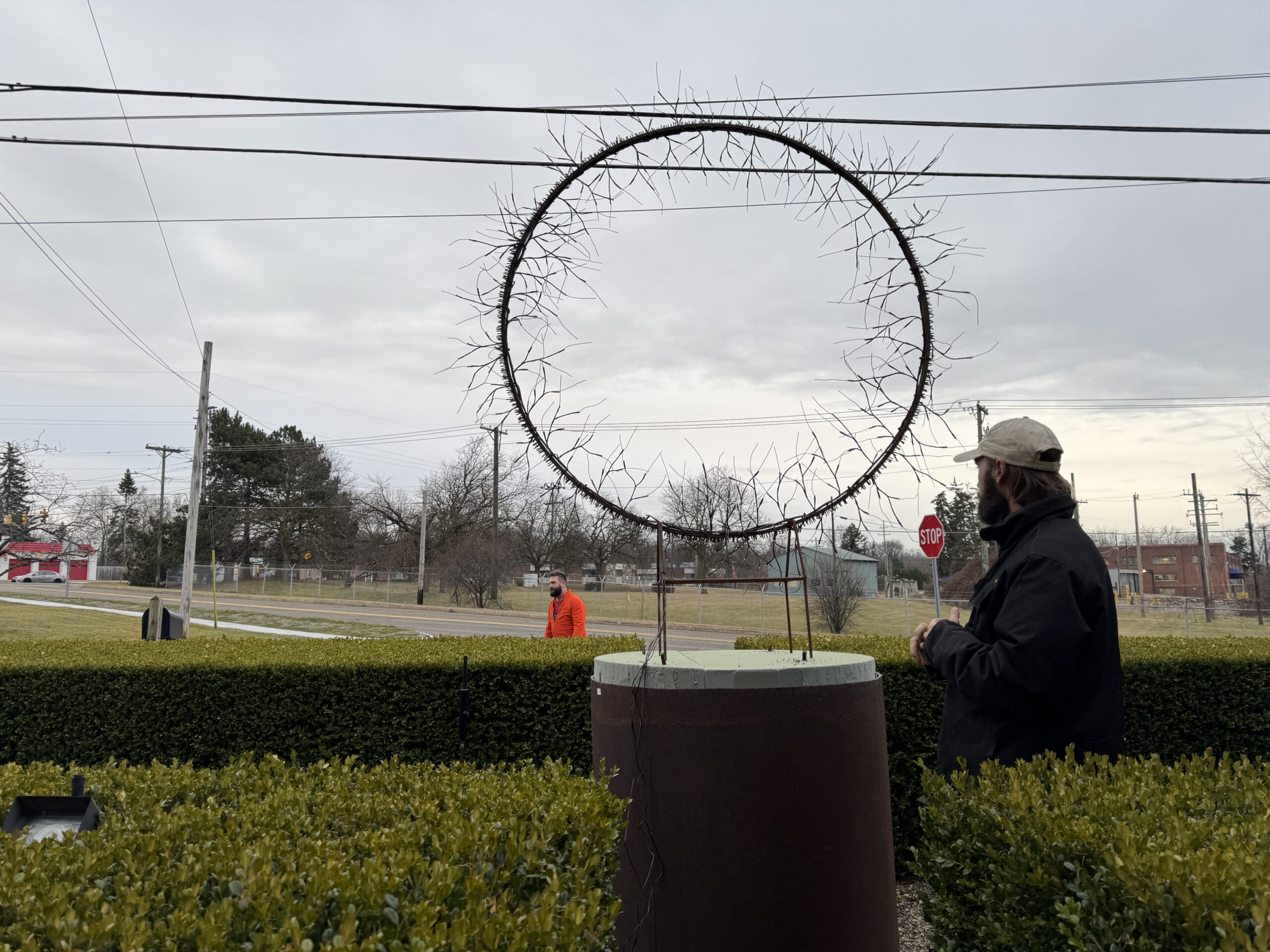
It was not my intent to give the impression that the time it took to write my previous post was in any way comparable to the time it took to light up that first vintage steel hoop and end up manufacturing steel light rings. In face I want to discourage that interpretation. That post was written well after the fact and in a matter of hours. The evolution of that glimmer of an idea to light up a vintage tractor wheel and hang it in a tree to shipping light rings all over the US – that took years. It takes loads of time to move off one’s own familiar dime in search of a new way of seeing – or being. Doesn’t it?
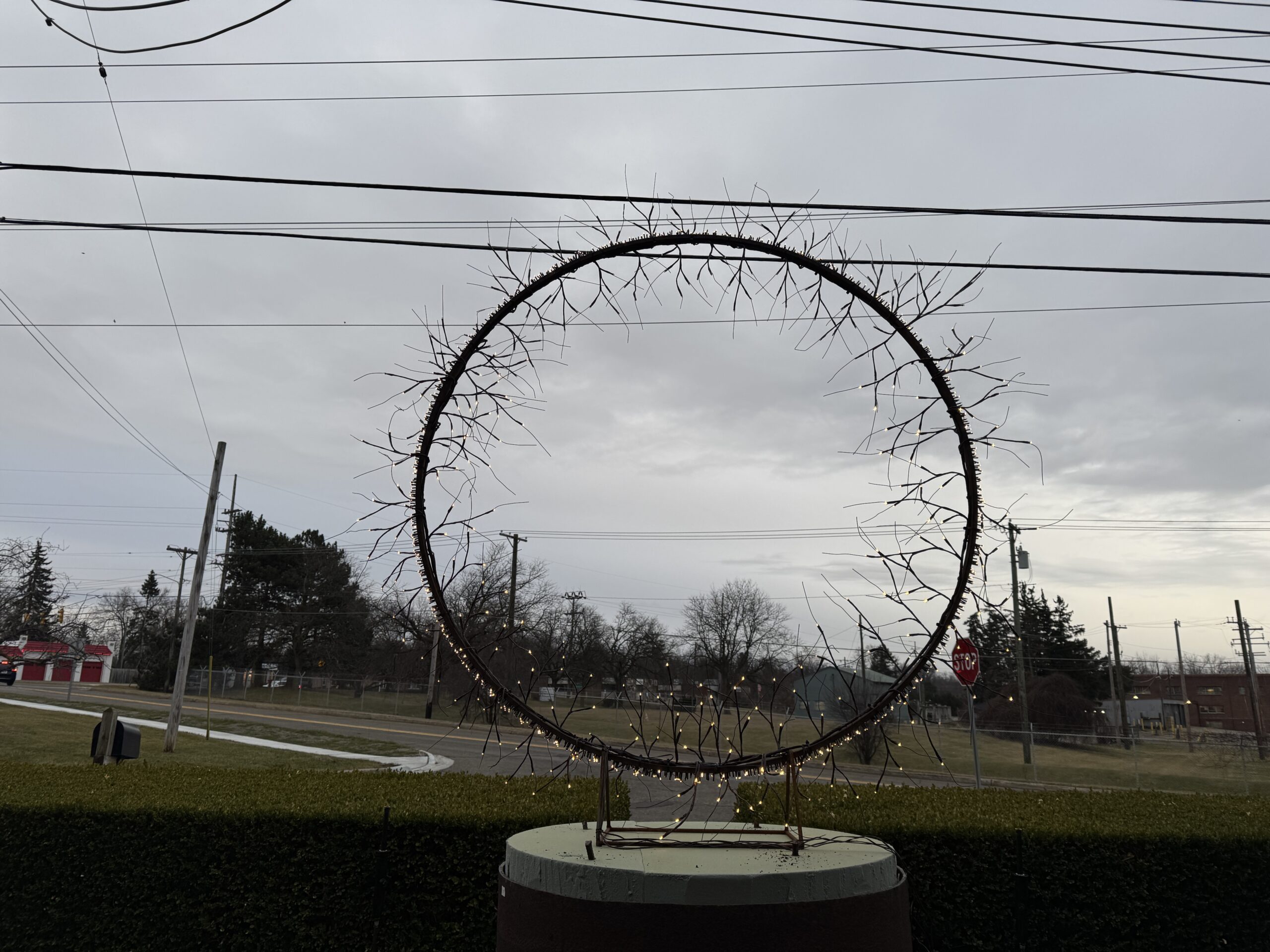
It was many years ago that we moved up to making light rings with multi colored light strands. White mini lights were not the only game in town, right? The hoops were fashioned from channel steel the width of which snugly held the incandescent light strings in place. The wrapping of the lights was a very formal and serious affair. Once Rob leapt off the usual and familiar, he abandoned the incandescent light strings for LED’s. The price had come down, and the expense to power them up was dramatically less. That was a crucially important step, but it meant that the hoops had to be redesigned. The ring is wider and the channel is deeper now. The best news of all of that transformation is the cost of running the lights around the clock, and close to all year long, was very reasonable. The interest in the hoops grew.

I recall a fling with LED cherry light strands. Rob does make lots of winter/holiday lighting available to customers of Detroit Garden Works. The cherry lights are just one style of many we have had available to use. We took to those cherry lights-meaning we wrapped light rings with them. The fascination with those luminous sphere lights goes on – as well it should. I also remember a brief bead we had on various mixes of lights large and small. We were hooping it up. Years later, a five foot ring belonging to an adventuresome client now has lighted ornament hanging in that big empty space inside the ring. Hung from an arbor at the far end of her driveway, it lights the way as much as it says welcome home and Merry Christmas. The winter lights have a sculptural intent, but they also shoo away the dark.
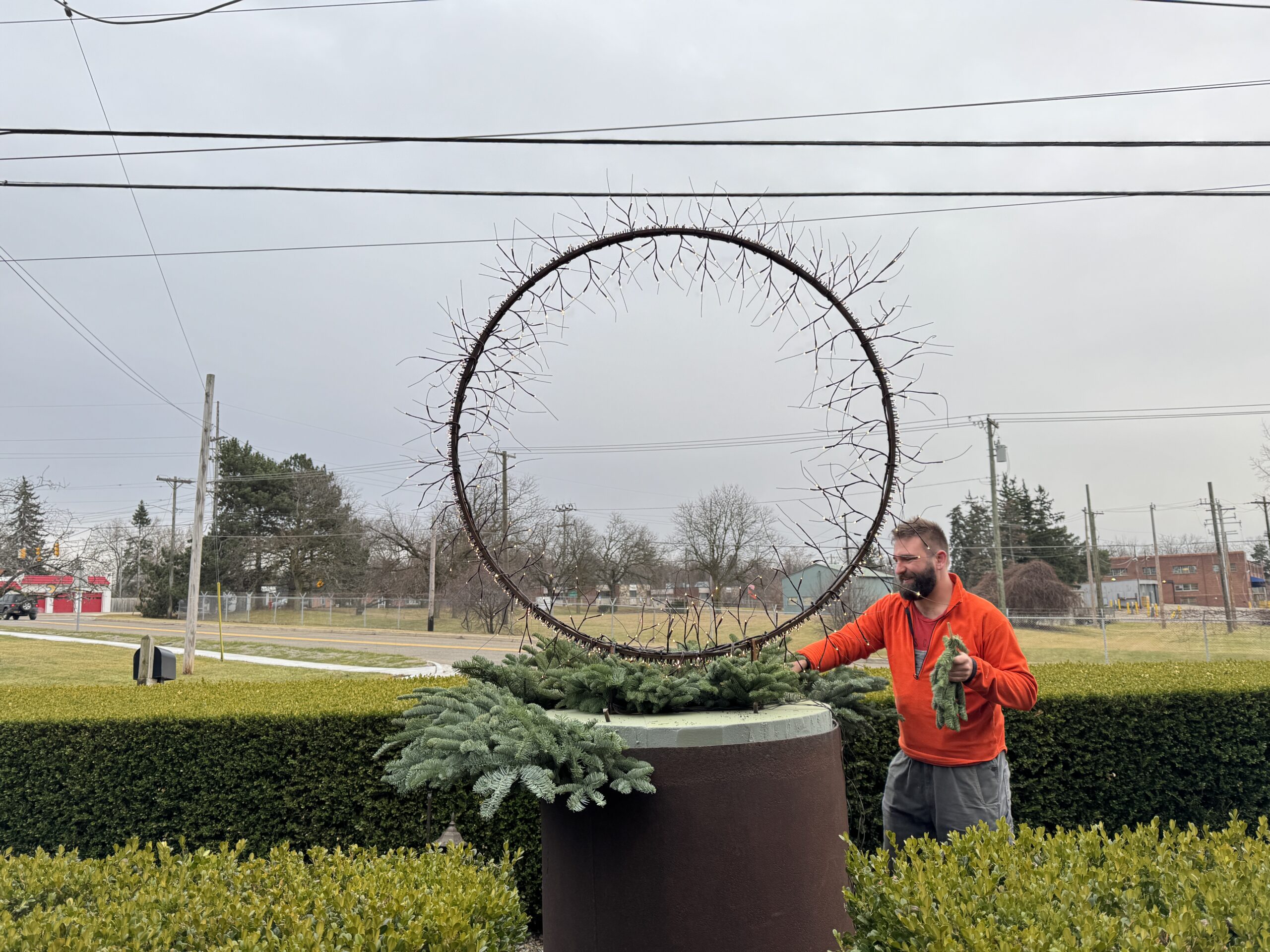
Rob stepped up to a version of the hanging light hoop that featured four rod steel legs. The new free standing rings could be placed in pots, or directly into the soil in the landscape. This step forward was liberating. One year a five foot light ring strung with our LED mini lights was wreathed in large galvanized snow flakes – zip tied on to the steel circle – one 3-D flake at a time. I don’t remember how that idea came to be, but it was smashing. Months ago, a client with existing light rings was looking for a fresh iteration. I was fussing a little and fuming plenty about what to do with them – not seeing a clear way forward. It finally occurred to me that her lighted rings could be armatures or structures. Those rings could be the supporting cast. A foundation upon which another independent element could be added.
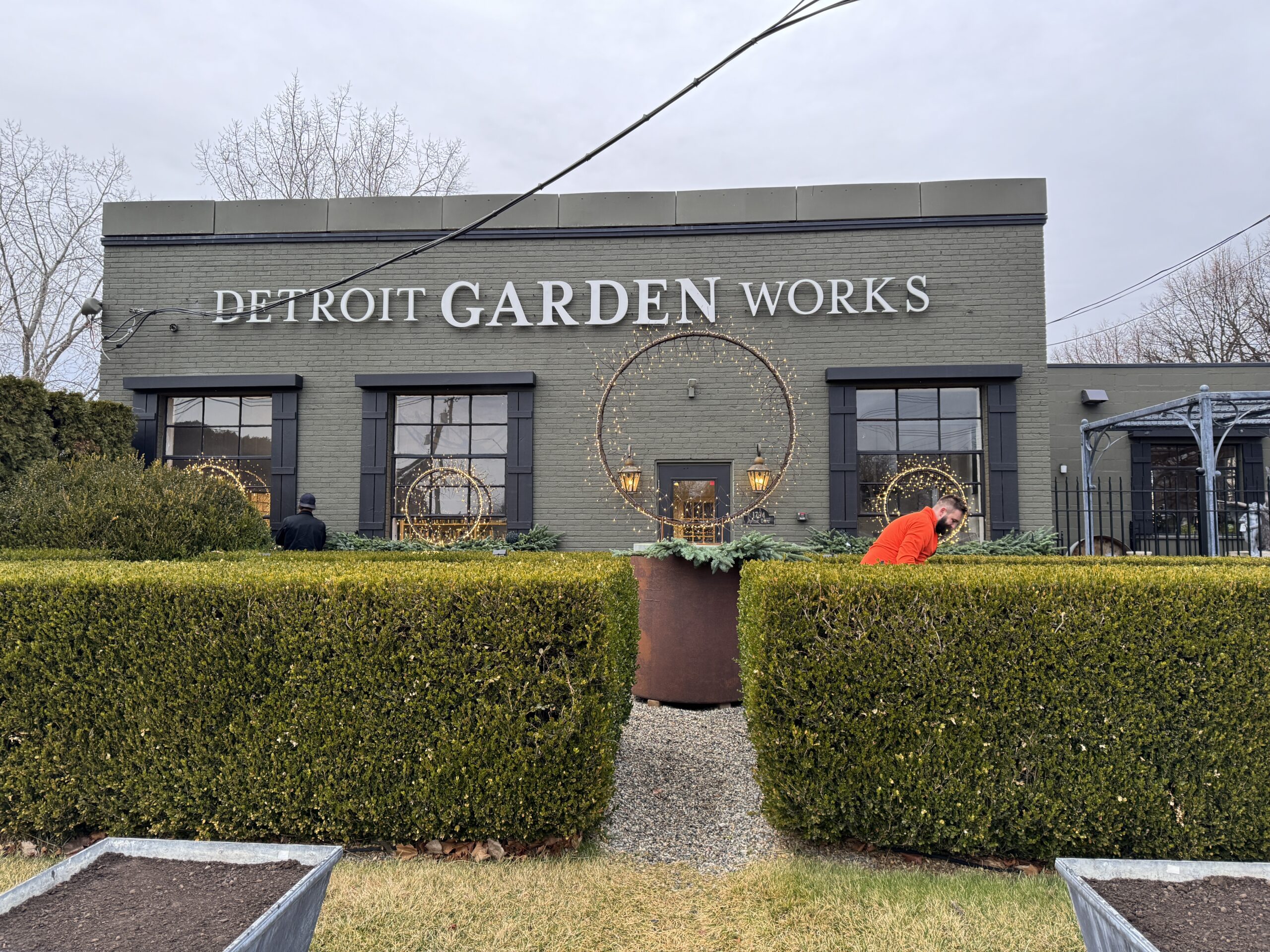
I found a direction worth pursuing. Pairing a light ring with a 6′ long lighted twig garland proved to be just the thing for taking a sculptural step. This light garland is very different than a typical light strand featuring all of the lights in an evenly spaced row. Once the garland is fluffed out, it added volume to the ring without weighing it down. The sturdily wired and lit branchlets enabled placing them both to the inside and to the outside of the ring. We featured this pairing this past week in the winter containers in the front of the shop. The long wired arms make the lights appear to be floating around the ring. Handsome, this.

Once all of our winter work for clients is done, we dress the front of the shop. This is a project we greatly enjoy, as it signals that all of our booked work is finished. The pace slows down. We take that time to sort out how we want to proceed, as we can. The centerpiece of this garden is a large and substantial cast iron vat. Five cases of noble fir from an alternate supplier sitting untouched in a corner proved to be the largest and longest fir boughs of the entire season. We had no idea that these boxes held such evergreen gold. That robust scale and length was just what this light ring and vat needed to make a winter container where every element is of proper proportion to the size of the space and the container.
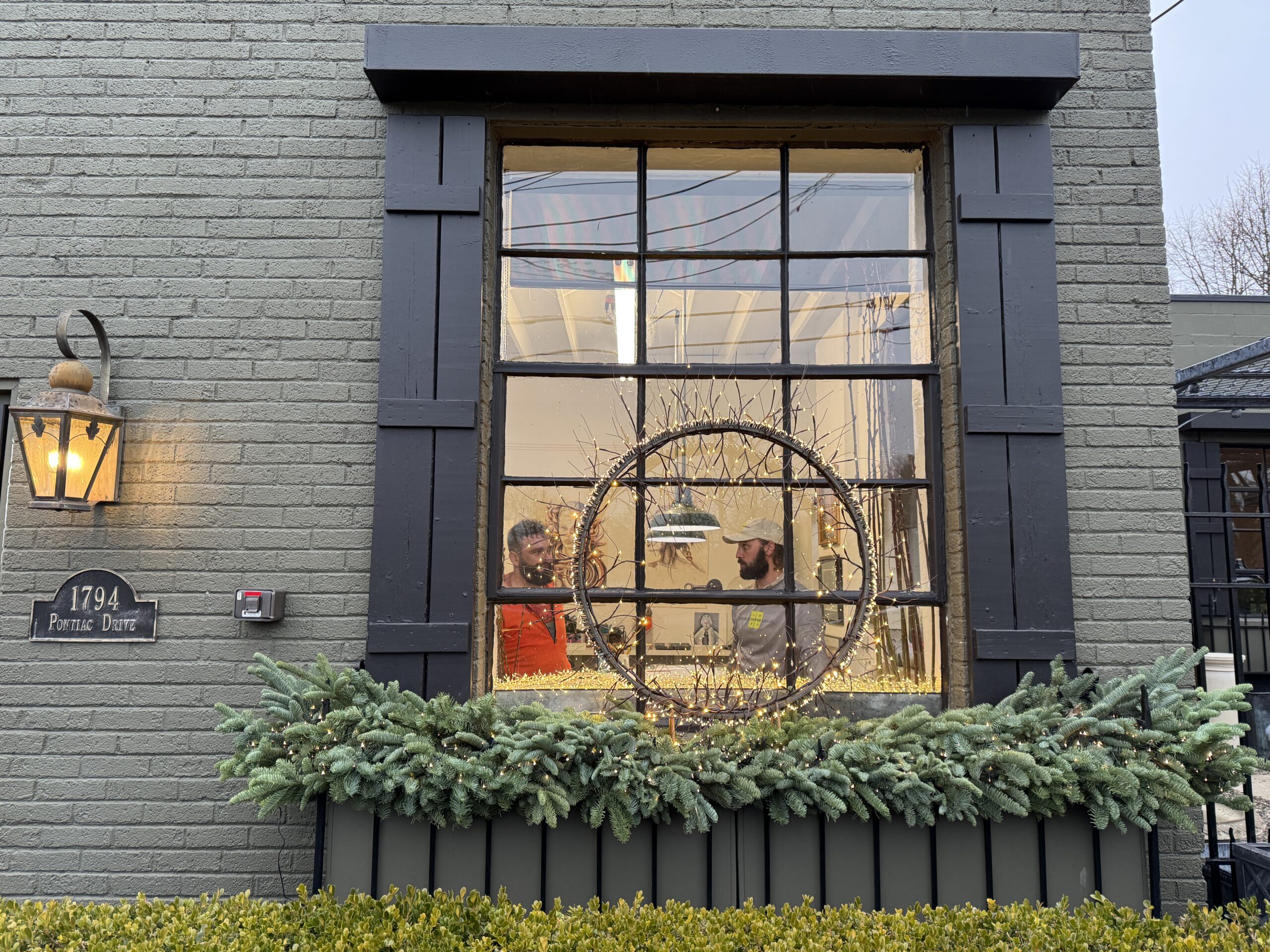
The windowsills inside my office are deep. I would say a foot or better. I have long toyed with the idea of making that interior sill space part of the exterior winter display-and vice versa. There is no reason not to. The glass is not a barrier to seeing. We loaded small galvanized rectangles with dry foam and lights, and 4 rows of pussy willow, set them close to the glass.

Those closely spaced sticks provided a simple yet uniformly textured background to the rings. It afforded the vignette some depth. They helped to define the space. They look good!
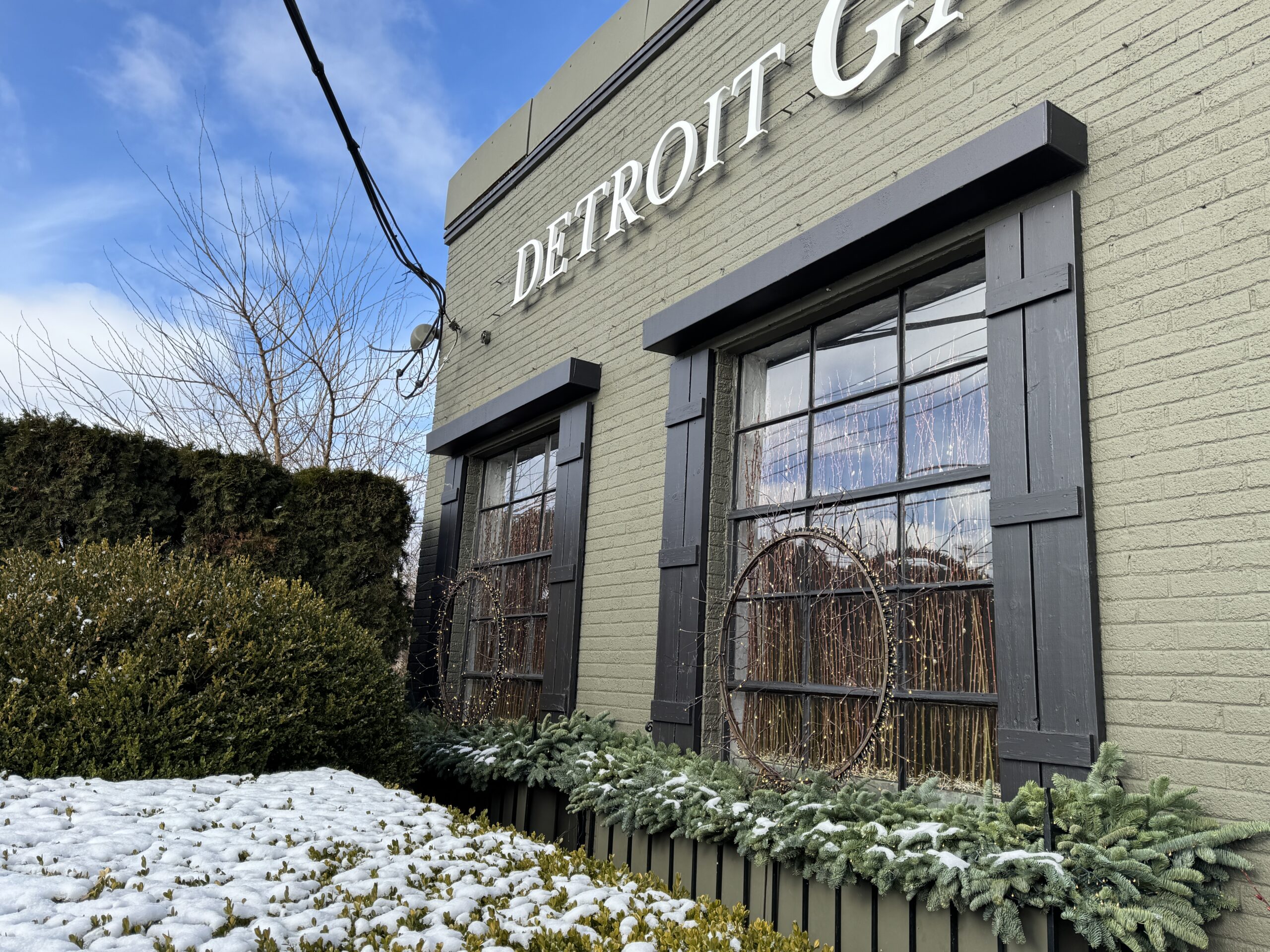
Making the view of the inside an integral part of the outside also provided privacy from the inside out. Every step we took with this project was a step in a direction I liked.
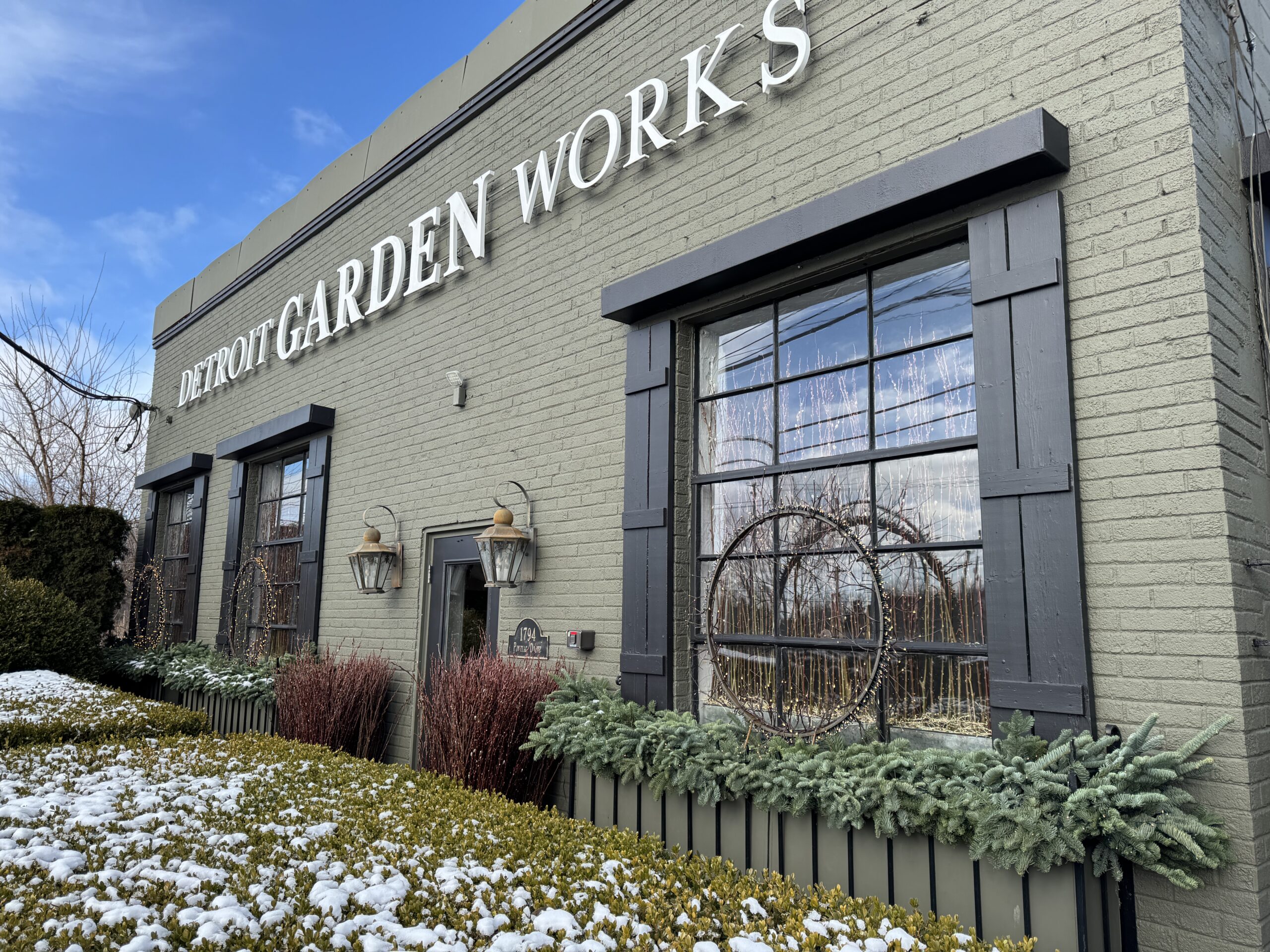
Filling the 2 planter boxes on either side of the front door solidly with bunches of pussy willow completed the look.
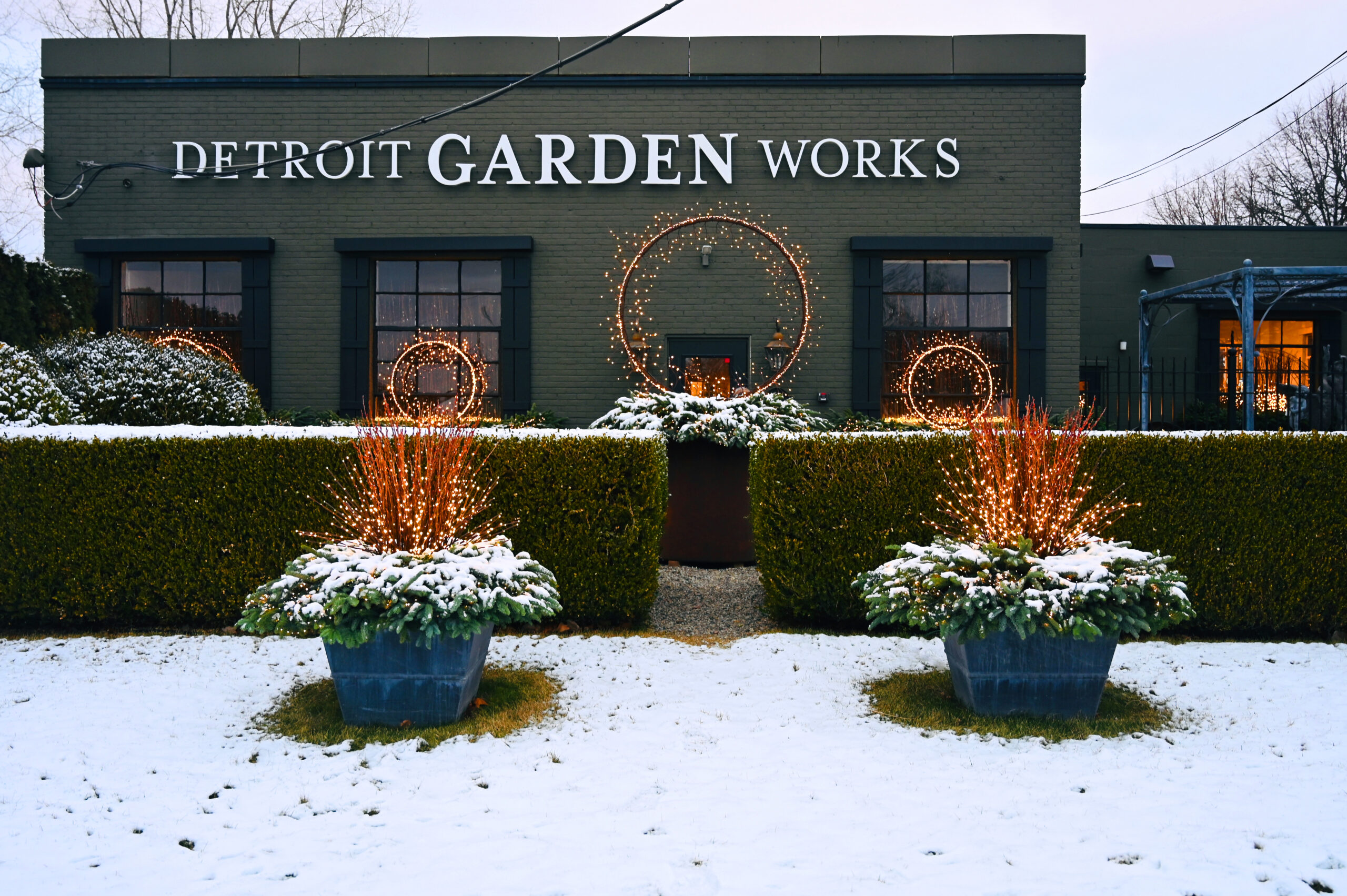
Bring it on, January.

